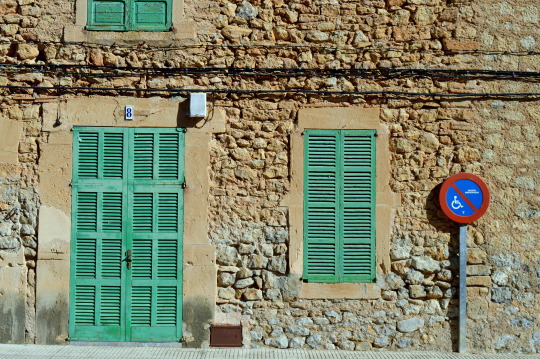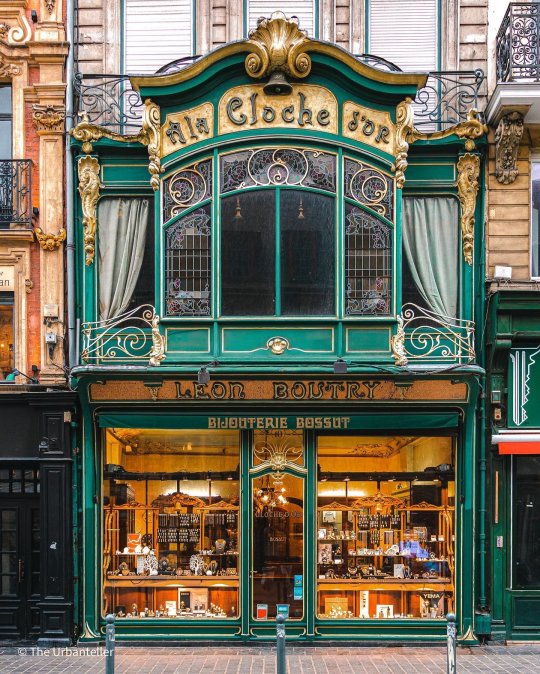#facade lighting
Text
What is Media Facade Lighting?
In the modern urban landscape, architecture is more than just structures; it's a canvas for expression, communication, and interaction. One of the most captivating and innovative forms of architectural expression is media facade lighting. This dynamic fusion of architecture and technology transforms buildings into vibrant visual spectacles, reshaping city skylines and captivating audiences worldwide.
Media facade lighting refers to the integration of lighting systems, multimedia content, and architectural design to create visually striking displays on building exteriors. Unlike traditional static lighting, media facade lighting offers a dynamic platform for artistic expression, communication, and storytelling. By incorporating LED lights, projection technology, and interactive elements, architects and designers can turn buildings into dynamic screens that engage and inspire viewers.
At the heart of media facade lighting is the use of advanced lighting technologies, particularly LED (Light Emitting Diode) systems. LED lights are preferred for their energy efficiency, durability, and versatility. These lights can be embedded directly into building facades or attached to structures to create intricate patterns, animations, and visual effects. The flexibility of LED technology allows for precise control over color, intensity, and movement, enabling designers to craft immersive experiences that adapt to different contexts and occasions.
Projection technology also plays a crucial role in media facade lighting, offering a complementary approach to LED systems. Projectors can cast high-resolution images and videos onto building surfaces, enhancing the visual impact and expanding the creative possibilities. By combining LED lights with projections, designers can create layered compositions that blur the lines between reality and illusion, transforming buildings into dynamic storytelling platforms.
Moreover, interactivity adds another dimension to media facade lighting, enabling real-time engagement between buildings and audiences. Through sensors, motion detection, and user interfaces, viewers can actively participate in the visual experience, influencing the narrative or triggering responsive animations. This interactive element fosters a sense of connection and ownership, turning passive spectators into active participants in the urban environment.
The applications of media facade lighting are diverse and far-reaching, spanning across various domains such as art, entertainment, advertising, and urban branding. In cultural institutions, media facade installations serve as immersive art experiences, showcasing digital artworks and multimedia performances to a wide audience. In entertainment venues, media facades enhance the atmosphere and create memorable experiences for visitors, blurring the boundaries between architecture and entertainment.
Moreover, media facade lighting has become a powerful tool for urban branding and placemaking, allowing cities to differentiate themselves and create distinct identities. Iconic buildings illuminated with vibrant displays become landmarks that symbolize the spirit and vitality of a city, attracting tourists, investors, and residents alike. From the luminous skyline of Tokyo's Shibuya district to the pulsating facades of Times Square in New York City, media facade lighting has become synonymous with the modern urban experience.
Beyond aesthetics, media facade lighting also holds potential for communication and information dissemination. In public spaces, illuminated facades can serve as dynamic billboards, conveying messages, announcements, and cultural events to a broad audience. Whether it's promoting social causes, sharing local news, or celebrating cultural heritage, media facade installations have the ability to inform, inspire, and unite communities.
However, with its transformative power comes a set of challenges and considerations. As cities embrace media facade lighting, questions regarding energy consumption, light pollution, and visual clutter arise. Designers and policymakers must strike a balance between artistic expression and environmental sustainability, ensuring that lighting installations enhance rather than detract from the urban environment.
Furthermore, the content displayed on media facades raises issues of censorship, commercialization, and cultural sensitivity. As digital billboards proliferate in public spaces, concerns about the commodification of architecture and the erosion of cultural identity emerge. It's essential for stakeholders to foster responsible practices that prioritize creativity, diversity, and community engagement while respecting local regulations and cultural norms.
In conclusion, media facade lighting represents a convergence of technology, architecture, and art, reshaping urban landscapes and redefining the way we experience cities. With its ability to captivate, communicate, and connect, media facade lighting transcends mere illumination, transforming buildings into dynamic canvases of expression and imagination. As cities evolve and embrace the possibilities of digital urbanism, media facade lighting stands as a beacon of innovation, creativity, and urban vitality.
#facade lighting#facade lighting fixtures#exterior facade lighting#media facade lighting#led facade lighting
0 notes
Text

Our first 2024 post had to be auspicious and pious with the opening of Ram Mandir on 22nd January.
We are delighted to share another divine project, it’s the ISKCON temple in Mayapur(Kolkatta) with a concept image of the lighting design by Lightbook.
Lighting design by @_light_book
.
Visit:- https://www.lightbook.in/
.
lightingdesign #monumental #divine #sacred #blessed #architecture #architecturalmarvel #scale #timeless #instaproject #visualidentity #arch #experimentswithlight #isckon #gammonindia #lightbook
#lighting designer for residences#building lighitng designer#external lighitng designer#luxury lighitng#high end residential lighting#luxury lighitng designers#rich lighting#facade lighting#facade lighting designers#IALD designers#indias lighting designers#indian lighting designers#experienced lighiting designer#foreign lighitng designers#london lighitng designers#uk lighting designers#dubai lightting designers#middle east lighting designers#lighting in london#lighting in dubai#Uk based lighting designers#Lighting Design#Lighting Designer In India#Light Book
0 notes
Text
1 note
·
View note
Text
Facade lighting is a powerful tool for creating an unforgettable visual experience for those who view a building. Whether it's for commercial or residential use, facade lighting can transform any structure into a work of art. Gain insights into the different types of facade lighting and their significance in architectural design, and learn how to maximize the potential of this technique in your projects.The beauty of any architectural design lies in its ability to evoke emotions and make a lasting impression. One way to achieve this is through facade lighting, which adds depth, color, and personality to buildings. Discover the importance of facade lighting in architectural design and explore the various types available to create a unique and visually stunning masterpiece.
#Facade lighting installation#LED facade lighting#Architectural lighting#facade lighting#architecture
0 notes
Link

KRS Brothers is the leading fountain manufacturer in Delhi. We have a wide variety of fountains for our clients. For all types of fountains, such as dancing and musical fountains, we have the latest design. Additionally, we offer affordable, superior-quality fountain lights of different shapes and sizes. We create the latest and most beautiful designs of fountain lights.
1 note
·
View note
Text







Kew House, Victoria, Australia - Sean Godsell
#Sean Godsell#architecture#design#building#modern architecture#interiors#minimal#house#house design#modern#cool houses#cool homes#home#interior design#metal#corten steel#steel#shading#mesh#living room#transparent#light#bedroom#hillside#suburban#cool architecture#design blog#facade#garden#australia
298 notes
·
View notes
Text
Unpacking is very cute and I admire the type of narrative it's able to pull off just through the gameplay of moving into spaces. the intimacy of everyday objects, still life, environmental storytelling, etc etc etc
But i have Got to talk about 2010. Unpacking is a game where all you do is take stuff out of boxes and find spaces for it, and for the most part it gives you quite a lot of freedom about where you can put stuff. There are some rules - most things cant go on the floor, stuff generally has to be in the right room, the soap has to be near the sink, etc etc, but apart from that there's no wrong place to put things.
Moving into this fucking guy's house in 2010 felt like putting everything in the wrong place. It felt like I wasn't supposed to be there, a square peg into a round hole. His entire house is pristine when I get there, everything organised perfectly, evenly spaced, colour-matched, sterile. Throughout the level I'm shoving everything around on his bookcase to fit my hoard of knickknacks, putting my red plastic colander in the cupboard above his cool green matching set of plates and bowls, my bright purple toothbrush cup, hairbrush, and straightening iron clutter his pristine bathroom counter. My family of stuffed chickens is made to look silly next to his fancy mixology set and miniature sand garden.
I end up putting my laptop and drawing tablet out on the kitchen island because there isn't a desk anywhere I can use. My markers and hoard of sketchbooks are crammed into my bedside table. I'm not allowed to move his posters in the living room, so my university certificate goes under the bed.
I won't pretend that I, playing Unpacking in 2023, didn't know how the game ended. I knew already that the protagonist would move on from this guy, but even if I didn't, I would have been able to tell. It was not fun moving into his house, it was not easy or charming to meld our lives together, I did not feel welcome there. Moving in with him felt like a transgression, an imposition. Moving in with him felt like a wrong decision in a game where I couldn't really make wrong decisions.
An incredible magic trick of game design, in my opinion.
#also something about how pristine this guys house was#but like. the CDs in his CD rack were all in there at random#and his fucking underwear was scattered randomly throughout 2 drawers#just gave me rancid vibes. this man cares so much about the Facade. the Presentation.#and as a result his house has the character and charm of a fluorescent tube light#anyway. good game#unpacking#unpacking game
452 notes
·
View notes
Text

10.2016 Artà
216 notes
·
View notes
Text

#photographers on tumblr#street photography#original photographers#streetphoto#streetphotography#street#light#oldcity#original photography on tumblr#architektura#built structure#building#clothes#colours#streetphoto color#facades#outdoors#citylife#city/town
85 notes
·
View notes
Text

Facade - Gonzalo Sicre , 2020.
Spanish, b. 1967 -
Acrylic on paper , 65 x 50 cm.
87 notes
·
View notes
Text

This art nouveau facade of a jewelry store in Lille
#dark academia#light academia#classical#academia aesthetic#escapism#academia#books and libraries#classic literature#books#architecture#art nouveau#facade#building#jewelry#store#green#beautiful#design#exterior#royal core#cottage core#aesthetics#mood#vibe#tumblr
336 notes
·
View notes
Text
#lighting designer for residences#building lighitng designer#external lighitng designer#luxury lighitng#high end residential lighting#luxury lighitng designers#rich lighting#facade lighting#facade lighting designers#IALD designers#indias lighting designers#indian lighting designers#experienced lighiting designer#foreign lighitng designers#london lighitng designers#uk lighting designers#dubai lightting designers#middle east lighting designers#lighting in london#lighting in dubai#Uk based lighting designers#Lighting Design#Lighting Designer In India
0 notes
Text
1 note
·
View note
Text
Artificial Intelligence enabled technology is already prevalent in other spaces such as commercial and entertainment across platforms that engage and connect with people on a multi-sensory level. In lighting, the interactive LED technology has been mostly realized through music-to-light mapping – driving light fixtures based on musical input, and motion sensor technology – operating light fixtures based on movement detection. Besides these, there is a great potential for other interactive data inputs such as voice recognition and data streams (from live inputs such as weather patterns).
0 notes
Text
i love how in some moments in the gatsby musical the gatsby accent isn’t as prominent. it seems like a very purposeful choice to show the persona of gatsby being let down a bit, and you see the real him, jay.
#you can hear it in some parts of songs specifically#but it definitely becomes less prominent when he is with daisy#its very clear in ‘my green light’#his emotions take hold over him in that song and he forgets the facade of gatsby and is *jay* again even if it is for a short time#jay gatsby#jeremy jordan#the great gatsby musical#musical theatre#daisy buchanan#great gatsby#the great gatsby#bway gatsby
49 notes
·
View notes
Text







Contemporary Art Centre, Córdoba, Spain - Nieto Sobejano Arquitectos
https://www.nietosobejano.com/
#Nieto Sobejano Arquitectos#architecture#design#building#modern architecture#interiors#minimal#concrete#modern#contemporary architecture#design blog#museum#museum aesthetic#art museum#art gallery#concrete architecture#brutalist#light#light and dark#sky light#hexagon#cordoba#spain#spanish architecture#cool architecture#cool design#photogaphy#white#facade#exterior
230 notes
·
View notes